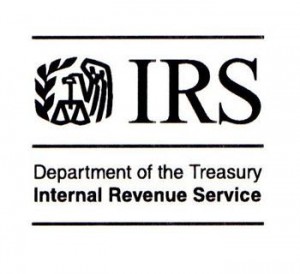March 2, 1987
Mr. Kirk F. Maldonado
Stradling, Yocca, Carlson & Rauth
660 Newport Center Dr., Suite 1600
Newport Beach, CA 92660-6441
Dear Mr. Maldonado:
This is in response to your letter of July 16, 1986, and subsequent letters of August 26, 1986, and October 14, 1986, in which you request an advisory opinion on the application of the Employee Retirement Income Security Act (ERISA) to the payment of certain expenses by the Canoga Park Hospital Retirement Plan (the Plan).
You represent that the Plan specifies that it may pay certain administrative expenses incurred in the operation of the Plan which are explicitly set forth to include:
(1) Attorney’s fees incurred in connection with amending the plan to comply with legislative, case law and regulatory developments;
(2) Annual valuations of the sponsoring employer’s stock held by the Plan;
(3) Annual audit of the Plan performed by a certified public accountant;
(4) The fees of an outside consultant performed in connection with the administration of the Plan (e.g., preparation of benefit statements to participants): and
(5) The fees paid to members of the Committee. (Subject to the rule of ERISA section 408(c)(2), prohibiting payment of compensation by a plan to any individual who is receiving full-time pay from an employer whose employees are participants in the plan.)
You ask whether the above expenses authorized by the plan constitute “expenses of administering the plan” within the meaning of sections 403(c)(1) and 404(a)(1)(A) of ERISA. You further ask whether the expenses incurred in connection with the bonding requirements of section 412 of ERISA could be charged to the plan.
Your inquiry relating to whether or not the payment by the Plan of the expenses described in your letter would be an appropriate expenditure of plan assets involves factual considerations with respect to which the Department will ordinarily not provide an opinion. (See section 5.04 of ERISA Procedure 76-1, 41 FR 36281, August 27, 1976.) Therefore the following discussion is intended to provide general guidance with respect to the various legal issues raised by your questions.
In evaluating the propriety of the payment of plan assets for certain expenses, plan fiduciaries must first consider the general fiduciary responsibility provisions of sections 403 and 404 of ERISA. Section 403(c)(1) of ERISA provides, in relevant part, that the assets of an employee benefit plan shall never inure to the benefit of any employer and shall be held for the exclusive purpose of providing benefits to participants and beneficiaries and defraying reasonable expenses of administering the plan. Similarly, section 404(a)(1)(A) of ERISA requires, in pertinent part, that a fiduciary of a plan discharge his duties for the exclusive purpose of providing benefits to participants and beneficiaries and defraying reasonable expenses of administering the plan. Thus, a payment that is not a distribution of benefits to participants or beneficiaries of a plan would not be consistent with the requirements of sections 403(c)(1) and 404(a)(1)(A) of ERISA unless it were used to defray a reasonable expense of administering the plan. For example, the use of plan assets to pay fees and expenses incurred in connection with the provision of services would not be a reasonable expense of administering a plan if the payments are made for the employer’s benefit or involve services for which an employer could reasonably be expected to bear the cost in the normal course of such employer’s business or operations. In this regard, certain services provided in conjunction with the establishment, termination and design of plans, so called “settlor” functions, relate to the business activities of an employer and, therefore, generally would not be the proper subject of payment by an employee benefit plan. It is the responsibility of appropriate plan fiduciaries to determine whether a particular expense is a reasonable administrative expense under sections 403(c)(1) and 404(a)(1)(A) of ERISA.
The prohibited transaction provisions also come into play in connection with payments for administrative services. Section 406(a)(1)(C) and (D) of ERISA provide, in part, that a fiduciary with respect to an employee benefit plan shall not cause the plan to engage in a transaction if he or she knows or should know that such transaction constitutes a direct or indirect furnishing of goods, services or facilities between the plan and a party in interest with respect to the plan or transfer to, or use by or for the benefit of, a party in interest of any assets of the plan.
Subject to the limitations of section 408(d) of ERISA, section 408(b)(2) exempts from the prohibitions of section 406(a) any contract or reasonable arrangement with a party in interest, including a fiduciary, for office space, or legal, accounting or other services necessary for the establishment or operation of a plan, if no more than reasonable compensation is paid therefor. Regulations issued by the Department clarify the terms “necessary service” (29 CFR Section 2550.408b-2(b) ), “reasonable contract or arrangement” (29 CFR Section 2550.408b-2(c)) and “reasonable compensation” (29 CFR Section 550.408b-2(d) ) as used in section 408(b)(2) of ERISA. What constitutes a “necessary service” in a particular case, however, can only be resolved by taking into account the relevant facts and circumstances. Thus, the fiduciaries of a plan should review all services provided to determine whether such services are “necessary services” for which payment would be lawful.
With regard to your specific question as to the payment of expenses incurred in connection with the bonding requirements of section 412 of ERISA, the Department has stated in its ERISA Interpretive Bulletin, 29 CFR Section 2509.75-5, at question and answer number FR-9, that the purchase by a plan of a bond covering plan officials, as required by section 412(a) of ERISA will not be deemed a prohibited transaction under sections 406(a) or (b) of ERISA.
We hope that this information has been helpful to you.
Sincerely,
Elliot I. Daniel
Associate Director for
Regulations and Interpretations
 Based on both campaign promises and Donald Trump’s plans for his first 100 days, a Trump presidency is likely to make major changes in employee benefits law. The most significant ones are likely to be:
Based on both campaign promises and Donald Trump’s plans for his first 100 days, a Trump presidency is likely to make major changes in employee benefits law. The most significant ones are likely to be:
 On April 8, 2016, the Department of Labor (“DOL”) issued final guidance dealing with investment advice to ERISA plans and their participants. While this guidance does not by its terms apply to governmental and church plans (which are not subject to ERISA), such plans often use DOL guidance as an indication of best practices which they will follow. Moreover, the DOL suggests that a breach of contract claim may be available to enforce the standards with respect to individual retirement accounts (“IRAs”), which are not subject to ERISA. While the DOL has no authority to regulate governmental and church plans, it has laid out a road map which state courts may use to impose liability on governmental and church plans under a breach of contract theory.
On April 8, 2016, the Department of Labor (“DOL”) issued final guidance dealing with investment advice to ERISA plans and their participants. While this guidance does not by its terms apply to governmental and church plans (which are not subject to ERISA), such plans often use DOL guidance as an indication of best practices which they will follow. Moreover, the DOL suggests that a breach of contract claim may be available to enforce the standards with respect to individual retirement accounts (“IRAs”), which are not subject to ERISA. While the DOL has no authority to regulate governmental and church plans, it has laid out a road map which state courts may use to impose liability on governmental and church plans under a breach of contract theory.
 Detroit’s bankruptcy has brought to the fore issues faced by participants in underfunded public (governmental) retirement plans. As explained in an article on CNN, “
Detroit’s bankruptcy has brought to the fore issues faced by participants in underfunded public (governmental) retirement plans. As explained in an article on CNN, “